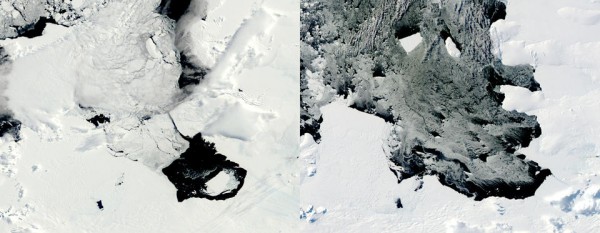SPLC finds Stormfront.org users—like Frazier Glenn Miller—are disproportionately responsible for major killings.
People charged with the murders of almost 100 people can be linked
to a single far-right website, according to a new report from the
Southern Poverty Law Center (SPLC).
The White Nationalist web
forum Stormfront.org says it promotes values of “the embattled white
minority,” and its users include Anders Behring Breivik, who killed 77
people in a 2011 massacre in Norway, and Wade Michael Page, who shot and
killed six people at a Sikh temple in Wisconsin in 2012.

After a two-year investigation, the
SPLC said (pdf)
that since Stormfront became one of the first hate sites on the
internet in 1995, its registered users have been disproportionately
responsible for major killings. The report was released a month early
after white supremacist Frazier Glenn Miller, also known as Frazier
Glenn Cross,
was accused of killing three people at a Jewish center in Kansas City on Sunday.
“We
know that the people who are going to commit the kinds of crimes, like
the kinds of crimes Miller committed last weekend, this is where they
live,” said Heidi Beirich, report author and a director at the SPLC’s
Intelligence Project. The report, released on Thursday, calls Stormfront
the “largest hate site in the world” and “a magnet and breeding ground
for the deadly and deranged.”
Of the site’s more than 286,000
users, only a small sliver are highly active, the report found, with
fewer than 1,800 people logging in each day. While the SPLC only
identified 10 murderers out of this large user base, researchers think
the murderers’ connection to the site is important because it shows how
the website offers a community for people who commit these crimes.
“It’s
pretty clear that websites like Stormfront are breeding grounds for
people who are just enraged at their situation, it’s there that people
find the reasons their lives aren’t as they had hoped and Stormfront
helps them find the enemy that is standing in their way – whether it be
Jews, African Americans, immigrants and so on,” said Beirich.
“Unfortunately it’s not very surprising that people who live in this
kind of stew of violent racism eventually pick up a gun and do something
about it at some point.”
Stormfront proudly declares that “every
month is white history month” at the top of its site and forum
discussions concern things such as the latest news stories, ideology,
poetry and creative writing.
“The fact of the matter is that more
people have been killed domestically by radical right extremists than
Islamic extremists since 9/11 and where you find a lot of these people
is on these sites,” said Beirich.
SPLC also identified 10
characteristics shared by killers who were active online including
unemployment, posting on more than one hate website, and sustained
activity on these sites.
Stormfront founder Don Black, a former
grand wizard of the Ku Klux Klan, criticized Miller for giving users of
his site a bad reputation. “We have enough of a problem with how we are
portrayed without some homicidal whack job coming along and reinforcing
that,”
Black told the Daily Beast.
After he was banned from Stormfront, the SLPC said Miller posted more
than 12,000 times on a similar forum, Vanguard News Network, whose
slogan is “No Jews, Just Right.”
The SPLC’s report said hate killings skyrocketed after Barack Obama was inaugurated in 2009.
“We
have seen and documented at the SPLC an enormous growth of groups on
the radical right, particularly in the last five years,” said Mark
Potok, the report’s editor and a senior fellow on the Intelligence
Project. “That growth quite clearly seems to be driven by the appearance
of Barack Obama on the political scene in the fall of 2008 and of
course his subsequent election.”
Potok noted that these hate sites
are protected by first amendment rights because they don’t contain
concrete plots to commit crimes. He said that law enforcement official
unquestionably pay attention to these sites, but criticized how much
analysis is done on users by federal authorities.
“We feel pretty
strongly that the Department of Homeland Security, which is the lead
agency in this country for developing intelligence about these groups
and individuals, has more or less taken its eye of the ball in the sense
that since 2009 the department seems more focused on Jihadists
terrorism,” Potok said.






































